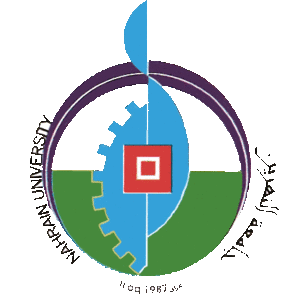Fifteen isolates of lactic acid bacteria were obtained from dairy products collected from Baghdad markets. The isolates belonged to 4 genera; Lactobacillus (7 isolates,), Pediococcus (5 isolates), Leuconstoc (2 isolates), and Lactococcus (1 isolates). Later, species identification of Lactobacillus showed that they belonged to Lactobacillus acidophilus (Lb.2 and Lb.6), Lactobacillus plantarum (Lb.3 and Lb. 7), Lactobacillus fermentum (Lb.4), Lactobacillus bulgaricus (Lb.5), and Lactobacillus brevis (Lb. 1). Sixty bacterial and yeast isolates were obtained from (30) patients suffering from folliculitis of scalp.These isolates were identified as Staphylococcus auerus (36 isolates) (60%), Candida albicans (12 isolates) (20%), Staphylococcus epidermidis (8 isolates) (13%), and Escherichia coli (4 isolates) (7%). When antibiotic susceptibility test was performed for Lactobacillus plantarum isolates, results showed that both isolates were sensitive to amoxicillin, erythromycin, ampiclox, bacitracin, and tetracycline, but resistant to penicillin G, ciprofloxacin, streptomycin. Regarding the pathogenic isolates causing folliculitis of scalp, they were sensitive to azithromycin, doxycycline and cefalexin but resistant to cloxacillin, rifampicin and ciprofloxacin. Isolates of C.albicans were sensitive to ketaconazole and Nystatin. Inhibition activity of Lactobacillus plantarum (Lb.7) against folliculitis of scalp isolates was tested on solid and in liqid media. Better inhibitory activity was obtained when Lb. 7 isolate grown on solid media than in the liquid one against all pathogenic isolates. Incubation period of 36 hr was chosen as the preferred period for pathogenic bacteria and 48 hr for yeast in this approach. However, Lb.7 isolate when grown in liquid media gave inhibition activity against gram positive bacteria tested at all incubation periods (36, 48, 72 hr) while gram negative bacteria and yeast were not affected. When the LAB filtrate was concentrated three times markedly inhibition activity resulted against all bacterial and yeast isolates of folliculitis of scalp. Bacteriocin of Lb. 7 isolates was extracted and partially purified to test its inhibitoiy effect against folliculitis of scalp isolates. Results showed that it had good inhibitory effect against all bacterial and yeast causative of this disease.Protein quantity in the concentrated filtrate and the bacteriocin was determined. Rusults showed that it was equal to 5 mg/ml in filtrate and 6 mg/ml in the partially purified bacteriocin. Minimum inhibitory concentration of concentrated filtrate was estimated and showed that 80% was the preferred value that inhibited all mentioned types of pathogenic isolates of folliculitis of scalp (Staphylococcus auerus, Staphylococcus epidermidis, Escherichia coli, and Candida albicans). For this finding, it was used in treatment of folliculitis of scalp patients. Results of treatment showed that after 2-3 weeks within filtrate, chronic recurrent folliculitis of scalp'completely or almost completely healing in most patient (up to 90%), with the presence of simple skin dryness as the only reported side-effect during hte period of treatment.
